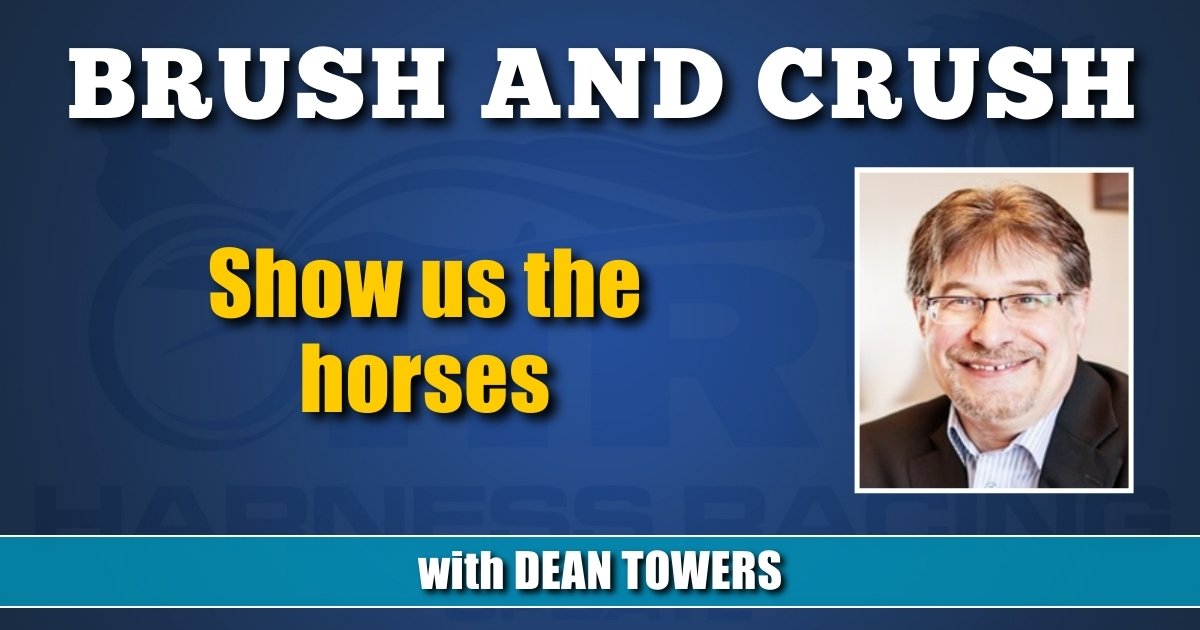
Show us the horses
Many of you no doubt make wagers on how a horse looks; how he or she moves scoring down, or even walks in the infield, because you know horses. It’s a learned skill, mastered with a mind’s eye, something a computer doesn’t have. It’s one way of getting a leg up on the computer teams.
by Dean Towers
In today’s betting world, it’s important for everyday customers to see what they’re wagering on
I was chatting with bettor Masaru Kanemoto on social media recently. He’s embarking on a very interesting project — tracking how thoroughbred racehorses look in the paddock and post parade. Masaru is observing pre-race behavior like “head up”, “swishing tale” and “fighting bit”, logging the results in a database, and searching for trends.
This type of qualitative handicapping is not new. But in today’s betting landscape it might be more important than ever. With computer teams, professional database bettors and other sharp entities blasting the pools (using mainly computer-based speed figures, power ratings and the like), there’s room for the ‘feel’ bettors. It’s pretty difficult to add these factors to an algorithm in real time, so it is likely an edge.
Over in harness racing, many of you no doubt make wagers on how a horse looks; how he or she moves scoring down, or even walks in the infield, because you know horses. It’s a learned skill, mastered with a mind’s eye, something a computer doesn’t have. It’s one way of getting a leg up on the computer teams.
How does the sport facilitate this? I believe by broadcasting the horses in as many ways as possible.
The post parade is important, but so is everything that happens directly after the post parade. Following each and every horse before the word go should be a staple of every harness simulcast. Particularly with the favorites.
A hot horse (one that the computer algos may be on) could be a total pitch, keying a big score. A trotter breaking is similar. Meanwhile, the straight and true square gaiter with a confident driver scoring down is the Holy Grail.
Similar to this is the broadcast of qualifiers. It’s been a pleasant surprise to see more and more qualifiers uploaded to a tracks’ YouTube page, or in some cases (Woodbine and the Big M) shown live. I can’t tell you how much this is appreciated by customers who are willing to do the work, especially as the 2-year-olds start up. We do not expect perfection – even Hoosier, for example, uploading the entire day, not race by race is just fine.
What else might be done to help the at-home, everyday player?
Why not (on big race days perhaps), broadcast the second warm-up trip. Warm-up miles generally happen in times of dead air, or when the simulcast hosts are chatting about an upcoming race. Wouldn’t it be nice at this year’s Meadowlands Pace to see Perfect Sting or Abuckabett Hanover go their second trips to gauge how they look before multi-race wagers are sent?
You’ll notice that the above not only addresses the wagering public, but horse owners and trainers who can’t make it to the track, too.
The harness racing betting environment has changed much over the last quarter century. People are betting from home, (or offsite) in vast amounts. Computer wagering is a staple of the betting pools. In my view, it’s never more important to ensure the track is brought directly into living rooms in the most innovative ways possible. The more reasons we give the public to watch and wager, the better chance they become regular customers.













